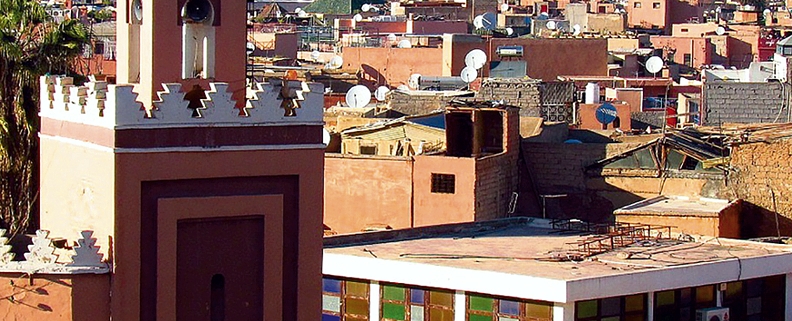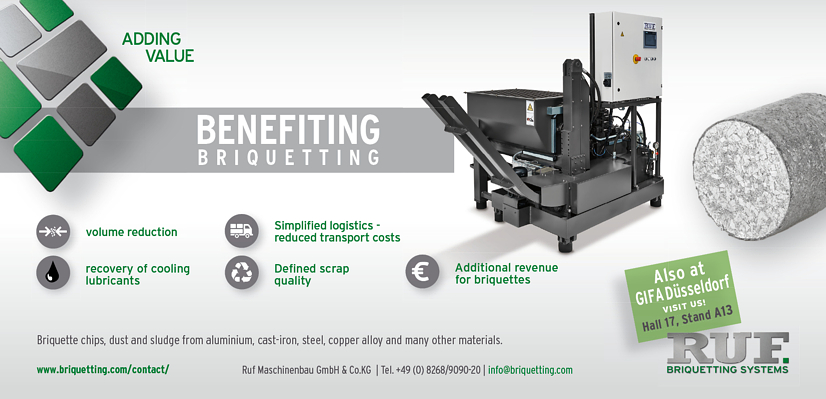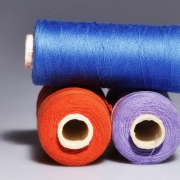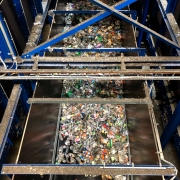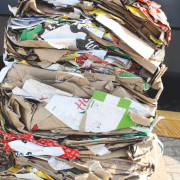Morocco: “Huge Potential for Investment”
Morocco’s National Program for Household Waste Management of 2008, funded by Dirham 40 billion (3.7 billion Euro), aimed at the improvement of waste collection and recycling as well as overhauling the country’s landfills.
“The strategy has borne fruit, with official waste collection rates doubling from 44 percent to 85.2 percent between 2008 and 2016. This has been aided in part by the construction of 22 new landfill and trash treatment centers,” investment and economic reporting agency Oxford Business Group balanced in 2018. Three additional centers under construction are provided to boost the national treatment rate of household waste from currently 53 percent to 81 percent.
Waste segregation not yet organized
However, the upswing in recycling proceeded much slower. In 2014, a comprehensive review on behalf of the United Nations gave account of a recycling rate of eight to ten percent. Furthermore, there was no segregation structure for recyclable household waste regarding glass, paper and paperboard, aluminum, plastic and metals waste, no recycling system for cells and batteries, no data on used tires, and no centralized or even organized waste collection for electrical and electronic equipment waste. Moreover, 30 million tons of construction waste produced yearly were mostly not segregated and dumped along roads, rivers or on unused plots of land. The review also indicated, that the recyclable household waste – collected and recycled by unofficial waste pickers – was sold to wholesalers and sent to Casablanca to transform it into energy, to reuse the material or to export the waste. In sum: “Waste segregation has not yet been organized. There is an informal recycling sector, in which valuable waste items are recovered by waste pickers at the landfill sites. … Until recently, all waste was disposed of in illegal dumpsites.” Omar Agodim, Morocco project coordinator of the Global Cleantech Innovation Program, formulated it even sharper: “Take our country, where our landfills are completely full, and we have no solution except digging bigger holes.”
Supported by World Bank
However, there were other solutions. A program from 2009 to 2011 – supported by the World Bank – for example, totaling 271.3 million US-Dollar, had already resulted in the establishment of a National Commission of Solid Waste Management; an effective result-oriented incentive mechanism allocating national financial resources to support municipalities; professional collection services benefitting two third of the urban population; a higher municipal service tax; an increase of the disposal rate to sanitary landfills from ten percent in 2008 to 37 percent in 2013; the closing or rehabilitation of 21 open dumpsites; the creation of 15 controlled landfills; the approval of 25 environmental impact assessments; and the piloting of social inclusion activities for about 150 waste pickers.
No benefit for all regions
But it seems that the effects of this measures did not benefit all regions. A scientific study on the province of Khenifra in 2017 pointed to six communities that “had no idea about the law of waste management in Morocco. In addition, the municipalities have never tried to pilot a selective collection or compost because of the heterogeneity of the waste and the difficulty of sorting. This may explain the orientation of municipalities to landfilling method.” And even in April 2018, Catherine Hansen writing for online platform EcoMENA was skeptical: “While this reform is expected to do wonders for the urban population, one can only hope the benefits of this reform trickle down to the 43 percent of the Moroccan population living in rural areas.”
A series of strategic actions
In 2013, the German Society for International Cooperation (GIZ) underlined: “Recognizing the risks posed by mismanagement of waste to the environment, Morocco has undertaken a series of strategic actions to reform the waste management sector.” This includes the Environmental Protection and Management program (2002-2017), the National Solid Waste Program (2008-2022) or the National Master Plan for Hazardous Waste Management (adopted in 2013). Several measures were taken too, partially in collaboration with international organizations. Already in 2014, the World Bank suggested the set-up of “various pilot projects” regarding electrical and electronic equipment waste and “several programs” for collecting and incinerating plastic and plastic bags at cement plants. In October 2015, agreements were finalized between three ministries and some industrial stakeholders focusing on the recycling of 140,000 tons of newspapers, 70,000 tons of used lubricating oils, and 105,000 tons of used cooking oils.
Additionally, this will create about 15,600 jobs, improving working conditions of employers “working in the informal sector and in poor conditions”, Environmental Minister Delegate Hakima El Haiti was convinced. And likewise, she was sure of an upcoming producer involvement: “Our main objective has been to consolidate the principle of shared responsibility by encouraging industries to take their responsibilities and organize themselves to reduce pollution.” According to the Oxford Business Group, the Moroccan state furthermore expects that this initiative will lead to the creation of 10,000 and 11,000 jobs in the liquid and solid waste management segments, respectively, by 2020. And in November 2016, Dutch development bank (FMO), European Investment Bank (EIB) and Banque Marocaine du Commerce Extérieur (BMCE) signed a financing contract. Consisting of a term loan of 20 million Euro and a comprehensive technical assistance division, it is to support BMCE, known for initiating sustainable finances, towards an improvement of solid waste management practices and standards. The loan will support the national waste management ambitions to rehabilitate or close all existing dumping sites until 2020 and reach a recycling rate of 100 percent by 2030, the EIB gave account.
Revival of private waste infrastructure
In 2013, the GIZ too criticized that “today only eight percent of industrial waste is disposed of through the private sector. The remaining 92 percent is handled by the informal sector either in unauthorized dumps, controlled landfills for municipal solid waste, or it is stored.” Since then, the Moroccan private waste infrastructure has revived. Meanwhile, French firm Suez and its subsidiaries are active in providing waste management services to regional companies, municipalities and the industry. As a producer of biofertilizers and biopesticides, Eléphant Vert from Switzerland turns organics into compost and biogas via decomposition. French cement company Lafarge Holcim is investing in a sorting center for mechanical-biological treatment and the extraction of fuel for cement and clinker production. Since February 2018, Geocycle Morocco runs the first municipal solid waste pre-processing platform in Morocco with a capacity of treating up to 90,000 tons per year, increasing the lifetime of Oum Azza landfill and creating sustainable local green jobs. And the Moroccan-French company Pour Et Par le Soleil operates a solar microwave oven that takes advantage of pyrolysis to decompose organic and other waste thermo-chemically. For the company’s CEO Hamza El Baroudi, the oven is not only “the first machine worldwide able to do this” – to transform 27 tons of waste into 18 tons of charcoal each day – but expects also “tremendous market opportunities in Africa and Morocco”.
Interested in investments
The waste sector of the North African state is getting increasingly more interesting for investments. In April 2018 for instance, the Dutch Ministry of Foreign Affairs offered – in the framework of public-private partnerships – a Moroccan municipality council to subsidize a part of the cost for a waste-to-energy conversion, while hiring a Dutch company to do the work. The Hassan II Fund is based on a framework agreement related to the support to industrial investment in 2015: It offers – among others – final financial contribution for building and equipment – capped at 15 percent of the total investment and capped at 30 million Dirhams (2.77 million Euro) – to companies specialized in the recycling of metallic and plastic waste or processing of phosphorus/phosphates. And the Industrial and Investment Development Fund – 2015 established in the course of the 2014-2020 Industrial Acceleration Plan and running up to 2020 – promised “direct aid” to projects of investment of over 20 million Dirhams / 1.84 million Euro (before tax) or the creation of at least 50 permanent jobs.
To say it with the words of Kimmo Tiilikainen: “Morocco offers huge potential for investment in sectors related to the green economy and, by virtue of its assets, notably stability, is a gateway to the African market.” Tiilikainen – Finnish minister of Environment, Energy and Housing – visited Morocco in January 2018, accompanied by a large delegation of 19 representatives of companies operating in the sectors of water, waste management, energy and bio-economy.
Photo: pixabay
GR 12019

